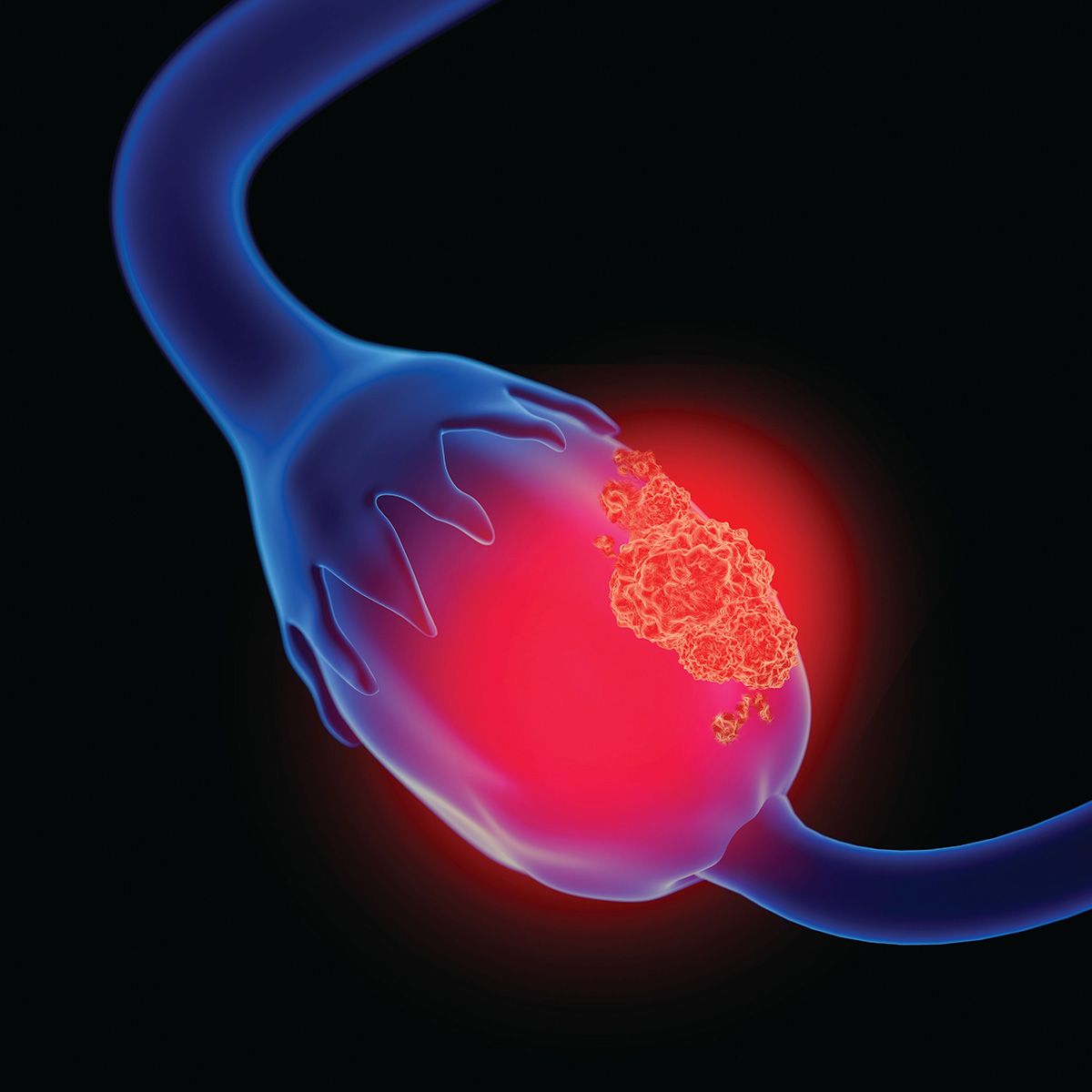Among patients with relapsed platinum-sensitive ovarian cancer, maintenance therapy with Lynparza (olaparbib) plus cediranib did not result in significant improvements to progression-free survival (PFS; the time a patient lives without their disease spreading or worsening) or overall survival (OS; the time a patient lives, regardless of disease status) when compared to treatment with standalone Lynparza, study findings have shown.
According to findings from the phase 3 ICON9 study presented at the 2024 ESMO Congress, at a median follow-up of 37 months, the median PFS was 11 months and 13.9 months in the Lynparza and Lynparza/cediranib arms, respectively.
“This was not statistically significant,” chief trial investigator Shibani Nicum, a consultant medical oncologist and associate professor of Medical Oncology at University College Hospital London, said during a presentation of the data.
Study Highlights:
- Maintenance therapy with Lynparza plus cediranib did not significantly improve progression-free survival (PFS) or overall survival (OS) compared to Lynparza alone in patients with relapsed platinum-sensitive ovarian cancer.
- Regarding safety, the safety profile was generally consistent with expected toxicities from the two agents. Events occurred in 17.6% (30 of 170 patients) and 19.8% (33 of 167 patients) from the Lynparza monotherapy and Lynparza/cediranib arms, respectively
ICON9 is an international academic, controlled, randomized phase 3 trial that assessed the efficacy of Lynparza and cediranib as maintenance treatment in first platinum-sensitive relapsed ovarian cancer after a prior response to platinum-based treatment.
“In terms of background, the majority of patients who present with advanced ovarian cancer will relapse within 18 to 24 months,” Nicum said. “In platinum-sensitive relapse, the PARP inhibitor [Lynparza] and the VEGF inhibitor cediranib have individually led to improved outcomes.”
Patients with relapsed platinum-sensitive ovarian, fallopian tube and primary peritoneal cancer were enrolled in the study (330 patients). Key eligibility criteria included having platinum-sensitive recurrence, maximum of two prior lines of treatment, complete response or partial response after a minimum of four cycles of chemotherapy, BRCA of any kind and no prior treatment with PARP inhibitors. Patients were stratified based on tumor BRCA status, surgery versus no surgery relapse, prior treatment with Avastin (bevacizumab), progression-free interval of six to 12 months versus longer than 12 months and country.
According to the results, at a median follow-up of 37 months, the OS in the intention-to-treat population did not have a significant difference by any stratification factor.
Arm 1 included 167 patients who were treated with oral Lynparza at 300 milligrams twice daily (BD) plus oral cediranib at 20 milligrams once daily (OD) until disease progression or beyond if clinical benefit is derived. Arm 2 included 170 patients who received 300 milligrams of oral Lynparza BD until disease progression or if clinical benefit was derived.
The primary end point was PFS; secondary end points included OS, toxicity, adherence, quality of life (QoL), cost-effectiveness, further treatment and response rate.
Baseline characteristics in both treatment arms were balanced: the median ages were 64 years and 62 years in the Lynparza monotherapy and Lynparza/cediranib arms, respectively; majority had an ECOG performance status of 0 (needed no assistance performing daily tasks , 56.5% versus 61.1%); majority had a serous histological type of carcinoma (97% versus 97.6%) and the majority of patients did not undergo surgery at relapse (85.3% versus 88.6%).
Regarding safety, the safety profile was generally consistent with expected toxicities from the two agents. Events occurred in 17.6% (30 of 170 patients) and 19.8% (33 of 167 patients) from the Lynparza monotherapy and Lynparza/cediranib arms, respectively. Progressive disease occurred in 82.1% (115 patients) and 76.9% (103 patients) of patients in the respective arms; toxicity occurred in 10.7% (15 patients) and 13.4% (18 patients). The median number of cycles was eight and 11, respectively.
The most common grade 3 or (severe) higher side effects occurring in the Lynparza plus cediranib versus Lynparza only groups included anemia (low red blood cell count, 23 patients versus 20 patients), hypertension (high blood pressure, 16 patients versus four patients), diarrhea (16 patients versus three patients), fatigue (10 patients versus five patients), decreased neutrophil count (a type of white blood cell, 10 patients versus four patients) and abdominal pain (eight patients versus five patients).
“To conclude, the improvement in progression or overall survival with maintenance [Lynparza] and cediranib was not statistically significant compared to [Lynparza] alone,” Nicum said. “But it's worth noting that in the [Lynparza] arm, the progression-free survival was better than we had expected at 11 months compared to 8.4 months, and also in terms of overall survival, it was significantly better than anticipated at 37.8 months rather than 29.8 months.”
For more news on cancer updates, research and education, don’t forget to subscribe to CURE®’s newsletters here.





